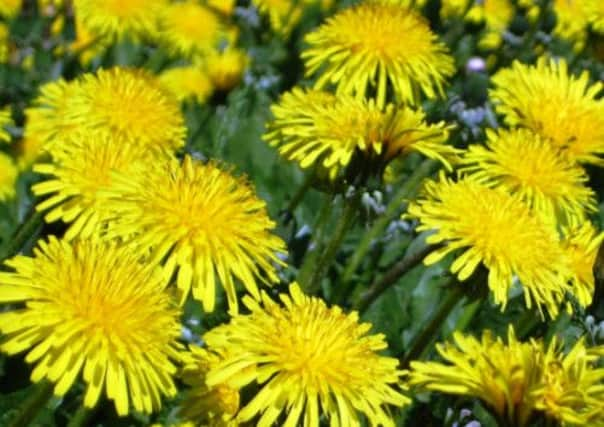Weeds united


“I like things neat and tidy,” he said recently. “Throughout the garden we hand weed and never use a hoe. After many years of intensive weeding, the results are there to see – we have a garden that is much easier to maintain and more enjoyable for the visitor.”
So take a tip from the expert and get weeding now. Because before the strong growth of perennial flowers such as daisies, lupins, delphiniums and penstemons, it’s much easier to spot the unwanted weeds, including dandelions, couch grass and ground elder – popping up between wanted plants.
Advertisement
Hide AdAdvertisement
Hide AdUnfortunately, digging (or hoeing, if that’s what you really have to do) is hard work but not very rewarding – you can rarely get out all the root of these weeds and they can easily spring back into life with an even deeper root system.
The modern way to rid your garden of weeds, even the ones with strong roots, is with a weedkiller that contains glyphosate. You can find hand sprayers or large containers of ready-to-use solution that are simply sprayed onto the growing weed leaves and left to penetrate deep down to the ends of the roots. Sometimes, one application isn’t enough, but there are few weeds strong enough to withstand a repeat spraying.
Which is why the hoe is becoming a bit of an anachronism with many gardeners who are now opting for chemical controls which are relatively simple to use, don’t encourage more weeds and don’t involve hard work and aching muscles.
After weeding it pays to top soil off with at least an inch of organic matter to act as a spring mulch. If the material is free of weed seeds this will help to keep the flower borders clean and tidy until the start of summer. A decent mulch also helps retain moisture in the soil and cuts down the need to water in dry spells. And a mulch can be more or less anything you want it to be – an expensive but attractive composted bark, gravel, a layer of compost - as long as it does the job, it’s worth the effort. But if you can, and if you’re strong enough and committed enough, there’s always the Phillip Nelson method....